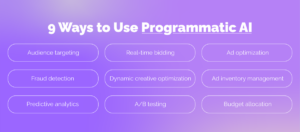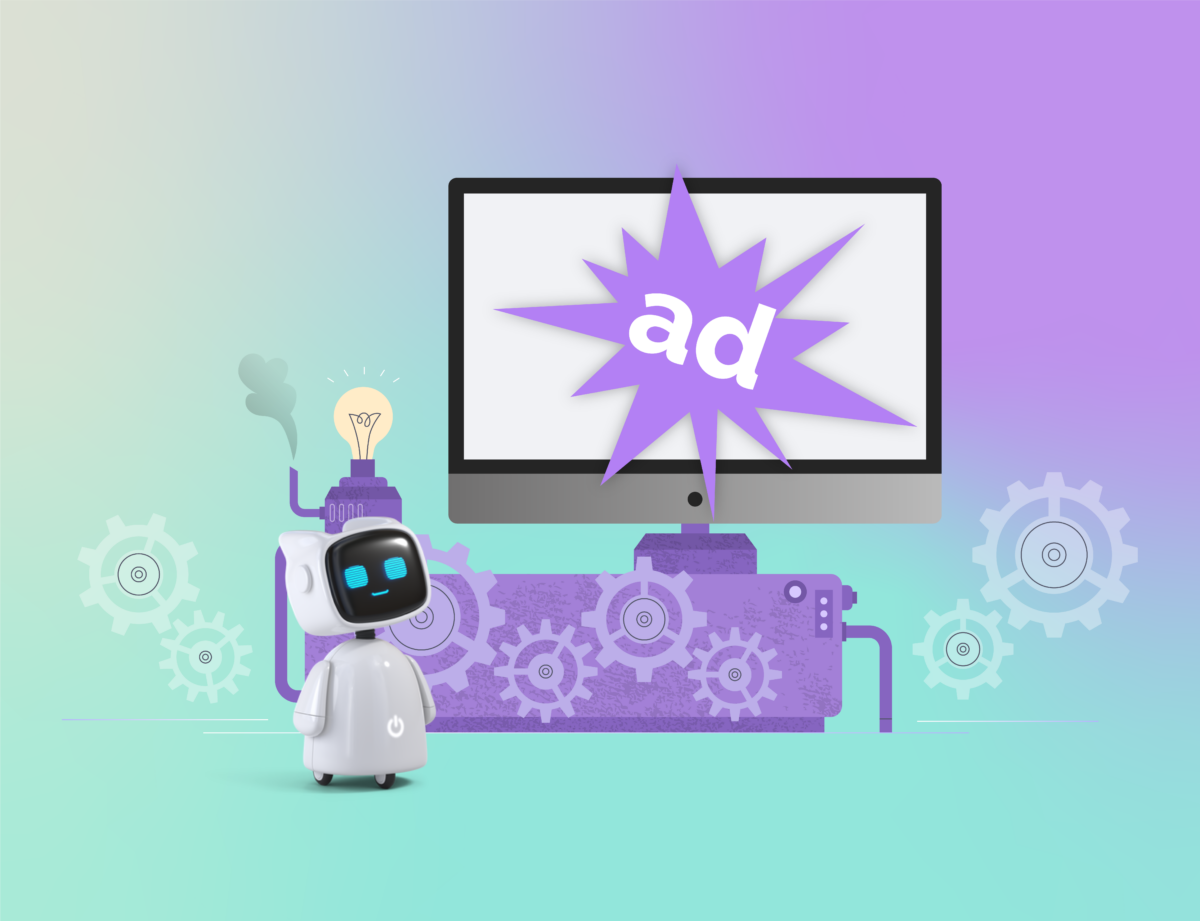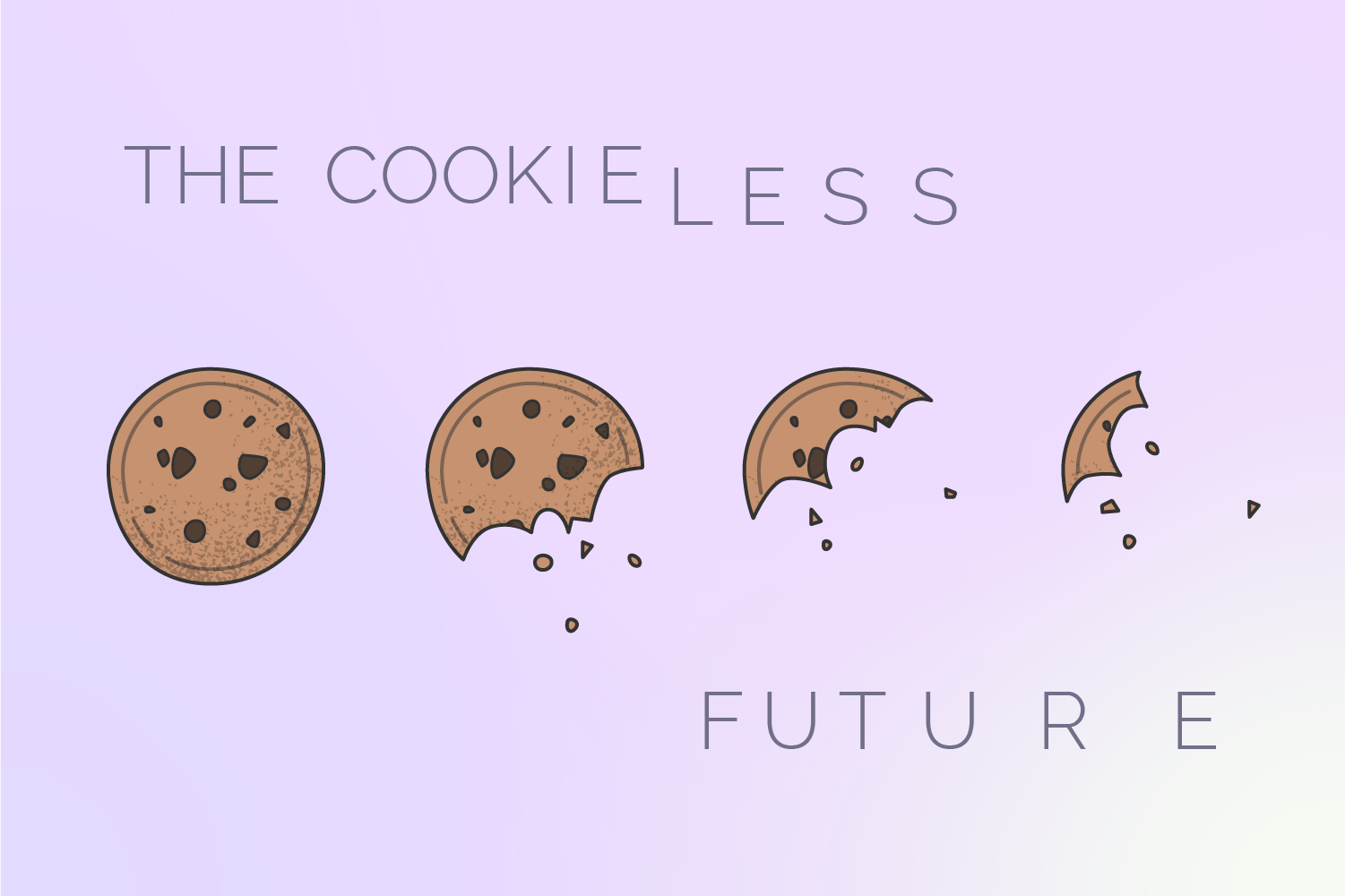With its capacity to analyze data, identify patterns, and make predictions, it’s no wonder artificial intelligence has become an indispensable component of programmatic advertising. Using machine learning and algorithms, AI can analyze and optimize ad creative formats and placements in real-time, as well as making predictions about customer behavior and preferences.
Many prominent brands are already using predictive analytics to deliver personalized marketing messages — like Starbucks, which uses customer data from loyalty cards and in-app orders to personalize their customer experiences and even inform key business decisions, such as where to open a new store or which products to offer.
If you’re looking for ways to leverage programmatic AI more effectively, read on — this article will break down the role of AI in the advertising industry and nine of the best ways to incorporate it into your programmatic offerings.
9 Ways to Use Programmatic AI (With Examples)
AI enhances programmatic advertising in various ways, allowing advertisers to target their audiences more effectively. Here are nine key ways AI is used in programmatic advertising to boost efficiency.

1. Audience Targeting
AI algorithms analyze vast amounts of data from various sources — such as online behavior, demographics, and interests — to build comprehensive audience profiles.
This data-driven approach helps advertisers identify and target the most relevant audiences for their ads. For example, an e-commerce company selling athletic apparel may use programmatic AI to identify and target users who frequently visit fitness-related websites, follow fitness influencers on social media, and have a history of purchasing sports-related products.
2. Real-Time Bidding
AI-powered algorithms enable real-time bidding on ad inventory. Advertisers use data insights to place bids on available ad spaces that match their target audience criteria, and AI systems automate the process of selecting the most relevant ads to display to users in real-time.
For instance, an online travel agency looking to promote vacation packages may use programmatic AI to bid on ad impressions that match the criteria of users who have recently searched for travel destinations or related keywords.
3. Ad Optimization
AI continuously analyzes and optimizes ad performance based on various metrics such as click-through rates (CTR), conversion rates, and engagement. By learning from past performance data, AI algorithms can adjust bids and ad placements to achieve better results.
For example, an app developer advertising a mobile game may use programmatic AI to test different ad creatives, placements, and audience segments to determine the most effective combination that generates the highest number of downloads and in-app purchases.
4. Dynamic Creative Optimization
AI can personalize ad content in real-time based on user behavior, preferences, and contextual factors. This ensures that users are presented with more relevant and engaging ad content, increasing the chances of conversion.
For instance, an online retail store may use programmatic AI to show personalized product recommendations to users based on their browsing history, past purchases, and preferences. Each user sees a unique ad showcasing products they are likely to be interested in, increasing the chances of conversion.
5. Fraud Detection
AI helps detect and prevent ad fraud by analyzing patterns and anomalies in ad traffic. It can identify invalid clicks or impressions and distinguish between legitimate and fraudulent activities, safeguarding ad budgets.
For example, a digital advertising platform may employ programmatic AI to flag and block traffic coming from suspicious sources or exhibiting abnormal behavior, protecting advertisers from paying for fraudulent ad impressions.
6. Ad Inventory Management
AI systems assist publishers in managing their ad inventory effectively. It predicts the demand for specific ad spaces, determines the best pricing, and optimizes the allocation of ad space to different advertisers for maximum revenue generation.
For instance, a publisher may use programmatic AI to manage its ad inventory and allocate premium ad spaces to advertisers willing to bid the highest for specific audience segments or time slots, maximizing revenue while delivering relevant ads to users.
7. Predictive Analytics
AI algorithms can forecast future trends and user behavior, helping advertisers make more informed decisions about their programmatic ad strategies.
For example, an online retail company might employ programmatic AI to analyze historical data of customer interactions, such as browsing patterns, past purchases, time spent on certain pages, and demographics.
With this information, the AI can predict which products a specific user is likely to be interested in, allowing the company to serve personalized advertisements that are more likely to lead to conversions.
This predictive approach enables advertisers to optimize their ad placements and deliver relevant content, ultimately increasing the chances of driving sales.
8. A/B Testing
AI can automate A/B testing processes, comparing different ad creatives and strategies to identify the most effective combinations for optimal results. For example, an advertising platform can employ AI algorithms to identify different user segments based on their behavior and preferences.
The AI can then automatically distribute different versions of an ad to the appropriate user segments, constantly monitoring and analyzing performance metrics such as click-through rates, conversion rates, and engagement levels.
By quickly identifying the most effective ad variations, programmatic AI allows advertisers to make data-driven decisions and allocate their budget more efficiently to maximize return on ad spend (ROAS).
9. Budget Allocation
AI helps advertisers allocate their budgets wisely by identifying high-performing channels and campaigns and reallocating funds accordingly.
For instance, consider a marketing team running multiple digital ad campaigns across various platforms like social media, search engines, and display networks.
Programmatic AI can continuously analyze performance data and assess the return on investment (ROI) for each campaign and channel. Based on historical and real-time data, the AI can automatically adjust the budget allocation in real-time to focus more on the campaigns and channels that are delivering the best results.
This dynamic budget optimization helps advertisers make the most out of their budget, ensuring it is allocated to the most effective channels and campaigns for reaching their target audience and achieving their advertising goals.
Programmatic AI Gets Better Results for Your Business
AI plays a crucial role in programmatic advertising by leveraging data-driven insights, automation, and predictive capabilities to enhance ad targeting, optimize ad performance, and deliver more personalized and relevant ads to users, resulting in higher results for advertisers and better experiences for consumers.
Grapeseed Media uses programmatic AI tools to create, optimize, and report on ad creatives and their placements so you can get the best ROAS for your budget.
Read more about how Grapeseed works with AI.




